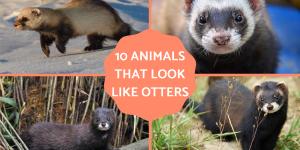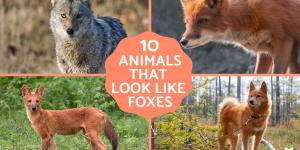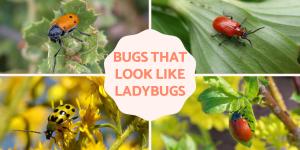Animals That Look Like Skunks


Skunks are a group of carnivorous animals that belong to the family Mephitidae. They were once considered part of the Mustelidae family, the family that currently contains weasels, martens, badgers and other mammals. Although they share certain characteristics, they have sufficient differences to warrant their own taxonomic family classification. There are different types of skunk, but they are all noted for having distinct fur markings and the ability to spray a malodorous liquid to defend against predators. These markings in particular remind us of other animals in the wild, something AnimalWised examines by sharing these 8 animals that look like skunks with photos.
Honey badger (Mellivora capensis)
As stated in the introduction, skunks were once considered a type of mustelid. For this reason, it should not be a surprise that many of the animals that look like skunks are part of this family. The first we share is the honey badger, a mustelid native to much of Africa and some regions of Asia. It can develop in various habitats such as jungles, forests and desert areas.
Although they may be a skunk-like animal, they are larger than skunks. They can measure up to 27" (70 cm) and weigh between 17.6-26.4 lb (8-12 kg). One thing they do have in common with skunks is the presence of well-developed anal glands which produce a foul-smelling odor, although it is not as band as skunks and they cannot spray as far. As seen in the photo their markings are white stripes on top of a black base fur, bearing resemblance to skunks.

American badger (Taxidea taxus)
The American badger is another skunk-like mustelid. It lives in Canada, the United States and Mexico, developing in thickets and areas with little vegetation cover. It digs burrows on the ground to protect itself and its young.
Although the American badger can be differentiated from a skunk, some aspects are similar. These include its elongated body, short limbs and tail with abundant fur. Their coloring is a combination of white, black and grayish fur, different from that of most skunks. However, the face has a white and black mask marking that is very similar to that of some skunks. In terms on conservation, they are considered of ‘Least Concern’.

Caucasian badger (Meles canescens)
Also known as the Southwest Asian Badger, the Caucasian badger (Meles canescens) is another type of badger that resembles a skunk. It is typical of Asia and the Mediterranean and lives in deciduous, mixed, coniferous forests, shrublands and suburban areas.
The Caucasian badger is larger than a skunk and its upper coat is gray, but its legs and lower body are black. These markings are seen in the photo below. On the face, it has a mask-like pattern of black and white that is similar to that of skunks. It is considered of ‘Least Concern’ and there are at least four subspecies currently attributed to this type of badger.
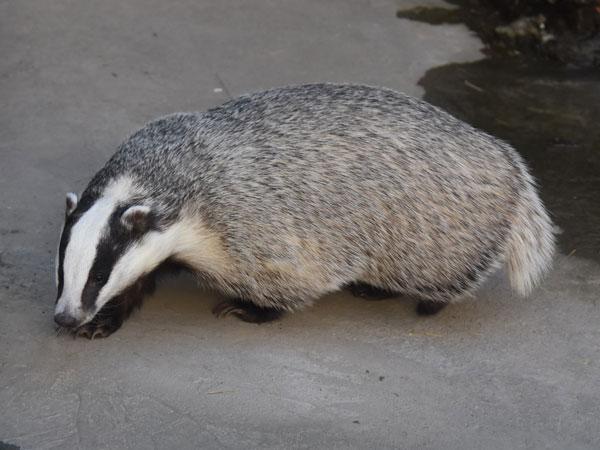
Sumatran hog badger (Arctonyx hoevenii)
Another skunk-like animal from our list is the Sumatran hog badger, a mustelid which is endemic to the region which bears its name. It lives in montane forests and subalpine grasslands. Although clearly distinguished from skunks, it also shares some similar traits, such as the black and white color pattern on its face. Despite being larger, the body shape is also similar. They are not considered true badgers, but the ‘hog’ in their name is apt since their nose resembles that of a pig's snout.
Learn more about this animal's namesake with our article asking are pigs intelligent?
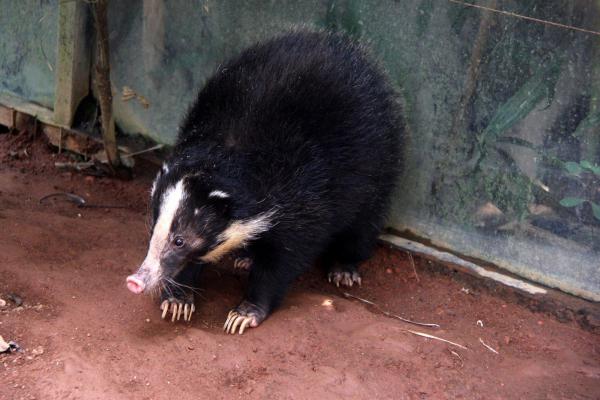
European badger (Meles meles)
Also known as the Eurasian badger, this animal that looks like a skunk bears a significant resemblance in terms of markings. Although their back has grayish patterns in their fur, their face has distinct black and white markings which are identical to those of the Caucasian badger. Widely distributed throughout Europe and some regions of Asia, its habitats are forests, open grasslands, coniferous forests and urban parks.
The European badger is larger than most skunks and does not have the same traits such as the skunk's distinctive tail. It is also considered to be much more aggressive than a skunk. Perhaps because it does not have a spray to defend itself, the European badger should be avoided if witnessed in the wild. Badgers also create intricate burrows known as setts to rest and raise their young. You can see a mother with her young badger in the photo.
See this animal and other mustelids on our list of the most aggressive animals in the world.

American polecat (Mustela nigripes)
Staying with mustelids, but moving away from badgers, our next animal that looks like a skunk is the American polecat. Also known as the black-footed ferret, the polecat is native to the United States, Canada and Mexico. However, in the latter two, it became extinct before populations were reintroduced by humans. To this day, their conservation status is considered ‘Endangered’.
In terms of size, the American polecat bears more resemblance to the skunk. They have a different body, with the polecat having a more lithe frame similar to domestic ferrets. However, they have a similar appearance to a baby skunk with the mask markings on their face, even if they have significantly less fur. The American polecat is also included in our list of animals that look like otters, perhaps resembling a cross between an otter and a skunk.

European polecat (Mustela putorius)
Another polecat that looks like a skunk, the European polecat has a wide distribution in the Western Palearctic and lives in countries such as Andorra, Austria, Belgium, Denmark, France, Germany, Spain and Portugal, among others. It is classified as ‘Least Concern’ in terms of conservation with healthy wild populations in Europe.
As shown in the photo, although their color is brown or cream with some black hairs, they resemble a skunk in terms of size and body shape. They do not have the same distinctive skunk markings and have a sleeker tail than skunks, but you might easily confuse them if you happen across them.

Grandidier's mongoose (Galidictis grandidieri)
The only animal on our list of animals that look like skunks that is not a mustelid, the Grandidier's mongoose has very distinctive markings which easily make it a skunk-like animal. Also known as the giant-striped mongoose, this animal almost looks like an inverted skunk, with black stripes along white fur on its back.
In terms of shape and body formation, the Grandidier's mongoose looks very much like a skunk. It has a pointed nose and a big bushy tail. Its size is also similar in terms of proportion to a skunk. Unfortunately, this animal is also considered ‘Endangered’ in the wild.
While we have shown these animals that look like skunks, it is important to remember that not all skunks are the same. Some have different markings and other features which may look more or less like the animals on our list. Learn more by discovering the different types of skunk in our related guide.

If you want to read similar articles to Animals That Look Like Skunks, we recommend you visit our Facts about the animal kingdom category.
- Animal Diversity Web. (2020). Retrieved from: https://animaldiversity.org/
- IUCN. (2024). The IUCN Red List of Threatened Species. Version 2023-1. Retrieved from: https://www.iucnredlist.org/search?taxonomies=101537&searchType=species

